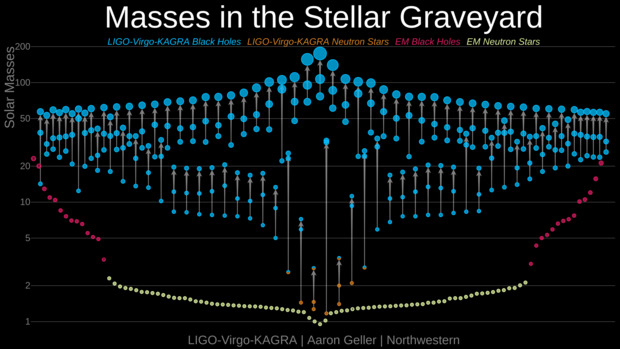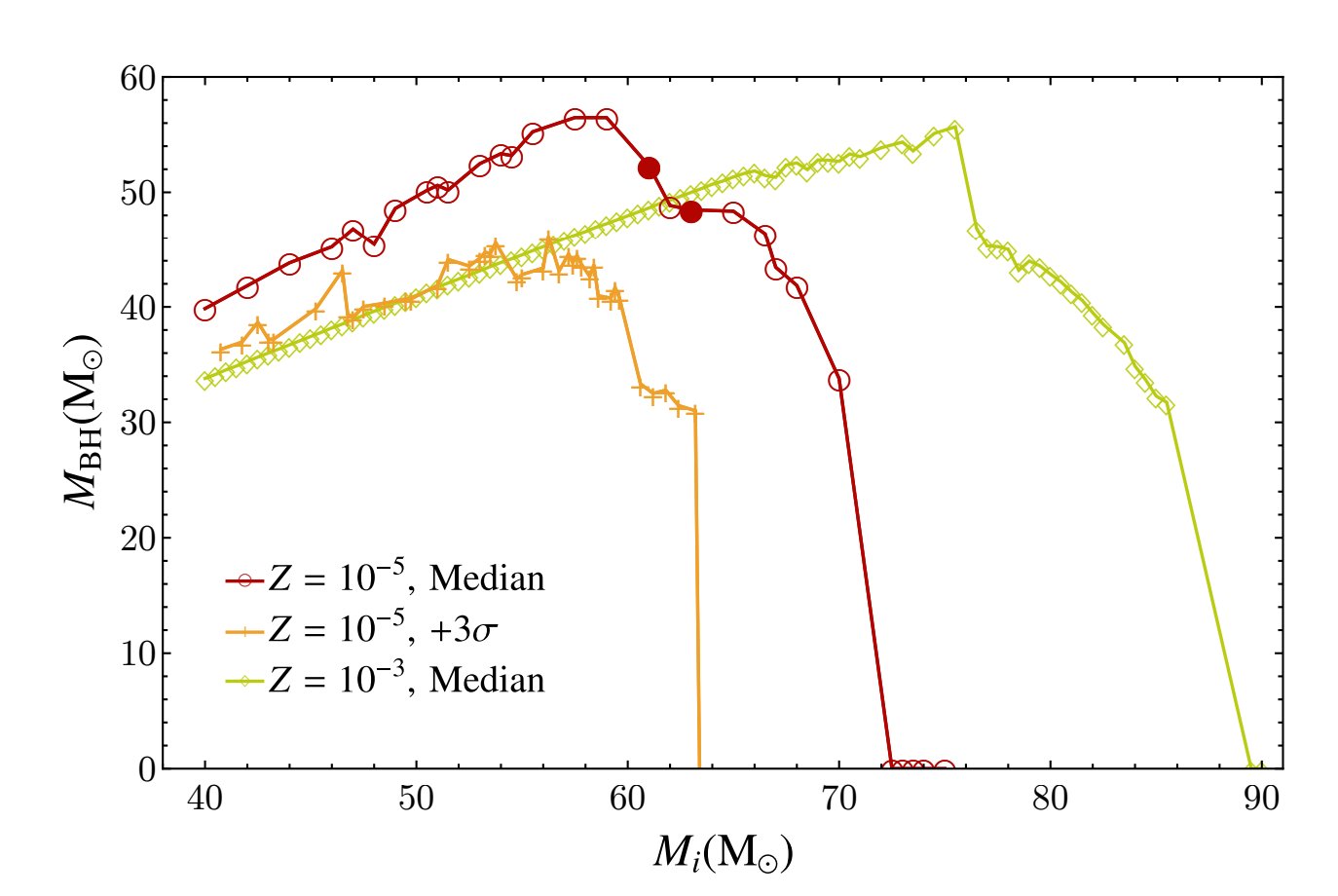A new peak for black holes
Via gravitational waves, we can observe black holes colliding. The LIGO/Virgo/KAGRA collaboration is so good at that, that it’s possible to learn about population properties of black holes. An example: what is their distribution of masses (the black hole mass function or BHMF)?

Then, via these black holes, we can learn about their progenitor stars. And it turns out that an extreme explosion in heavy progenitors dramatically affects the BHMF. I wrote about this in the context of new light particles (but it happens generally) here.
It has been known for a while that the extreme explosion — the pulsational pair instability supernova (PPISN) — implies a mass gap, in which no black holes are formed, which is preceded by a peak in the BHMF (see the sketch on the right):

Now, my collaborator Jeremy Sakstein and I ran new, very high-resolution simulations that revealed a new phenomenon significantly affecting the explosion process during PPISN, resulting in not one but TWO distinct peaks in the BHMF.
We observed that stars undergoing PPISN can form a shell in which alpha ladder reactions take place, exacerbating the instability. However, this doesn’t happen in all cases, creating a unique ‘shoulder feature’ in the black hole mass spectrum.

This shoulder feature indicates that a wide range of initial star masses can lead to the formation of black holes of nearly identical mass, implying a new peak in the BHMF, in addition to the known PPISN peak.

Our findings have broad implications for gravitational wave astronomy and cosmology, offering new insights into the structure and evolution of massive stars. The feature may even be helpful for research in cosmology!
In addition, these results may explain the mysterious peak at ~35 solar masses observed in the LIGO/Virgo/KAGRA GWTC-3 catalog of merging binary black holes. This peak couldn’t be explained with the previous understanding of PPISN.
Future gravitational wave data will allow us to search for these features with more statistical significance. I’m very excited about what we can learn! Read our full paper for a detailed analysis and implications of these findings: https://arxiv.org/abs/2312.13459